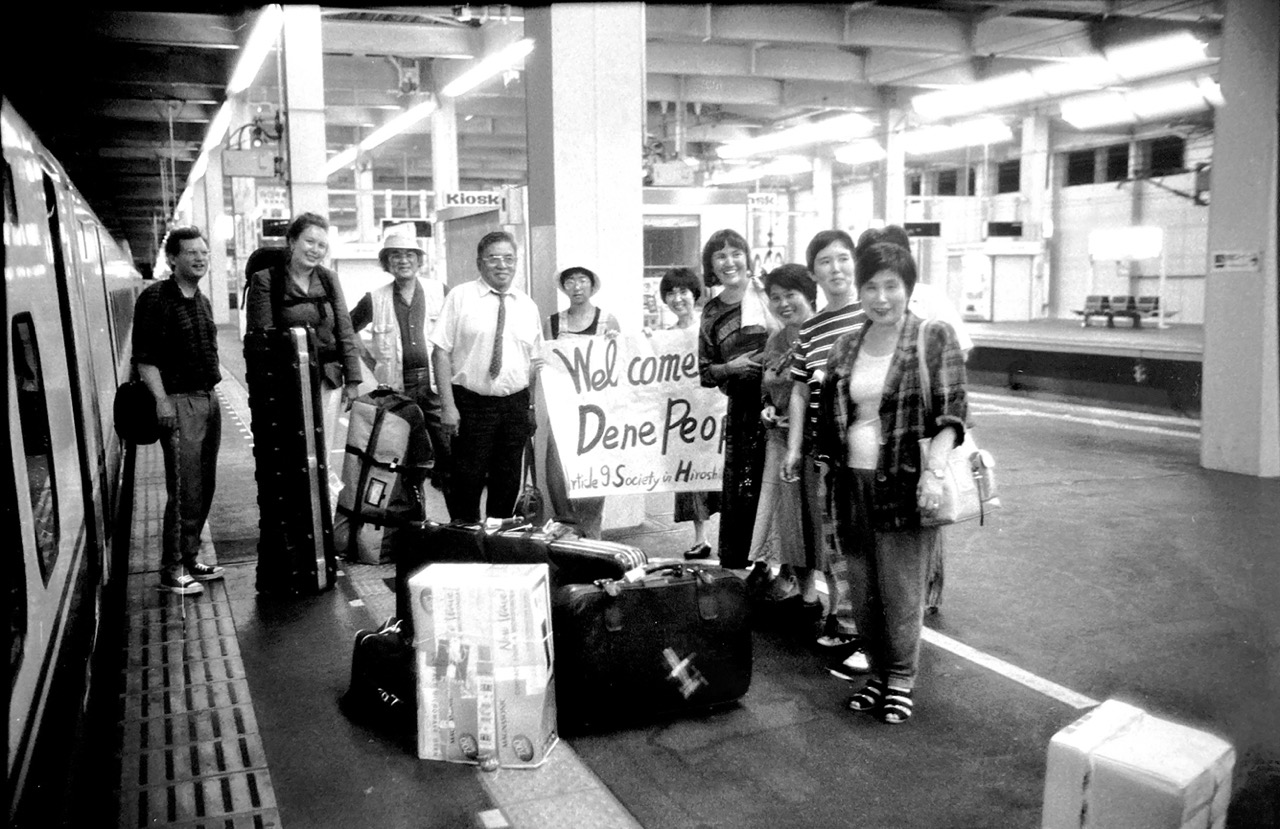
- This event has passed.
Village of Widows: The Story of the Sahtu Dene and the Atomic Bomb

Wednesday, November 5, 7 pm
$10 General / Free for Members
Peter Blow’s documentary Village of Widows: The Story of the Sahtu Dene and the Atomic Bomb (53 minutes, 1999) recounts the tragedy of the Sahtu Dene people used by the Canadian Government as “coolies” to transport the uranium ore that went into the bombs that shattered Hiroshima and Nagasaki. The Eldorado mine (situated on the remote shores of Great Bear Lake in Canada’s Northwest Territories) fueled the U.S. Military’s atomic bomb program from 1942 to 1960. Deadly radiation poisoning has left the Sahtu Dene village of Deline a community without grandfathers. 1.7 million tonnes of radioactive waste remains at the minesite and in their lake. The Sahtu Dene have travelled from the Stone Age to the Atomic Age in one generation.
Village Of Widows chronicles their struggle to come to terms with the legacy of the world’s first uranium mine on their traditional homeland. The film concludes with the remarkable spiritual journey taken by the group of Sahtu Dene who attended the Hiroshima Peace Ceremonies, and the friendship that developed between the Dene and the Hiroshima hibakusha.
Village Of Widows was broadcast to much acclaim on Canada’s VISION TV in 1999. It premiered at the prestigious Margaret Mead Film and Video Festival in New York; it was the 2nd prize winner of the RigobertaMenchu Tum Foundation Award at the First Peoples of the Americas Festival in Montreal, and won the VISION Humanitarian Award at the Hot Docs 2000 Festival in Toronto, where it was also nominated for Best Political Documentary.
Shown as part of the public programs as part of our exhibition, Radiation Borders, Peter Blow’s award-winning film showcases the both a little-known and far-reaching consequences of the U.S.’ atomic bomb, and how solidarities can form and be established across national and colonial borders. Special thank you to The Gem Theater in Bethel, ME. This event is supported by Teiger Foundation.
Attendees: Please note that you cannot enter Tri-Main Center after 7:30 pm. Squeaky Wheel is located in Suite 310 of Tri-Main Center. Take the elevator to the third floor, and head left. Click here to see parking, transportation, and accessibility information. Vegetarian samosas will be available. Members can email office@squeaky.org with the subject “Village of Widows” and we’ll reserve their spot within 24 hours. Not a member? Annual rates start at just $30 – sign up here.
Biography of the filmmaker
Peter Blow is a veteran award winning documentary filmmaker, who has worked on over 100 broadcast documentaries in England and Canada.
He graduated from the London International Film School and worked on two Oscar nominated specials, Mysterious Castles Of Clay and Leopard That Changed Its Spots for Anglia Television’s World Of Survival environmental series.
Emigrating to Canada in 1977, career highlights include – working as writer/researcher and story consultant on the Oscar nominated doc Harvest Of Despair, which chronicled the Stalin Engineered famine in Ukraine, that aired on PBS. In the mid eighties he started writing, producing and directing documentaries including Borrowed Time, a TVO/BBC Scotland co-production on the collapse of family farms, and The Barrens Quest, an NFB/CBC co-production for Nature Of Things. Village Of Widows, a doc he made in association with the Deline Band Council, won the VISION 2000 Humanitarian Award at Toronto’s Hot Docs Festival; the Rigoberta Menchu Tum Foundation Award (2nd prize) at the First Peoples of the Americas Festival, as well as the top documentary prize at the New York International Film Festival.
In the early 2000’s he began a long collaboration with Roman Kroitor, one of the inventors of IMAX, co-writing a 3D IMAX comedic animation fable entitled The Cosmic Junkyard with Roman. He is presently writing a semi-factual novel called Whack, which tells the remarkable story of the Irish Canadian adventurer who fought to end slavery in 19th century Cuba, and recently wrote and directed an affectionate portrait of his own small town Ontario community entitled, Last Beer At The Pig’s Ear.

